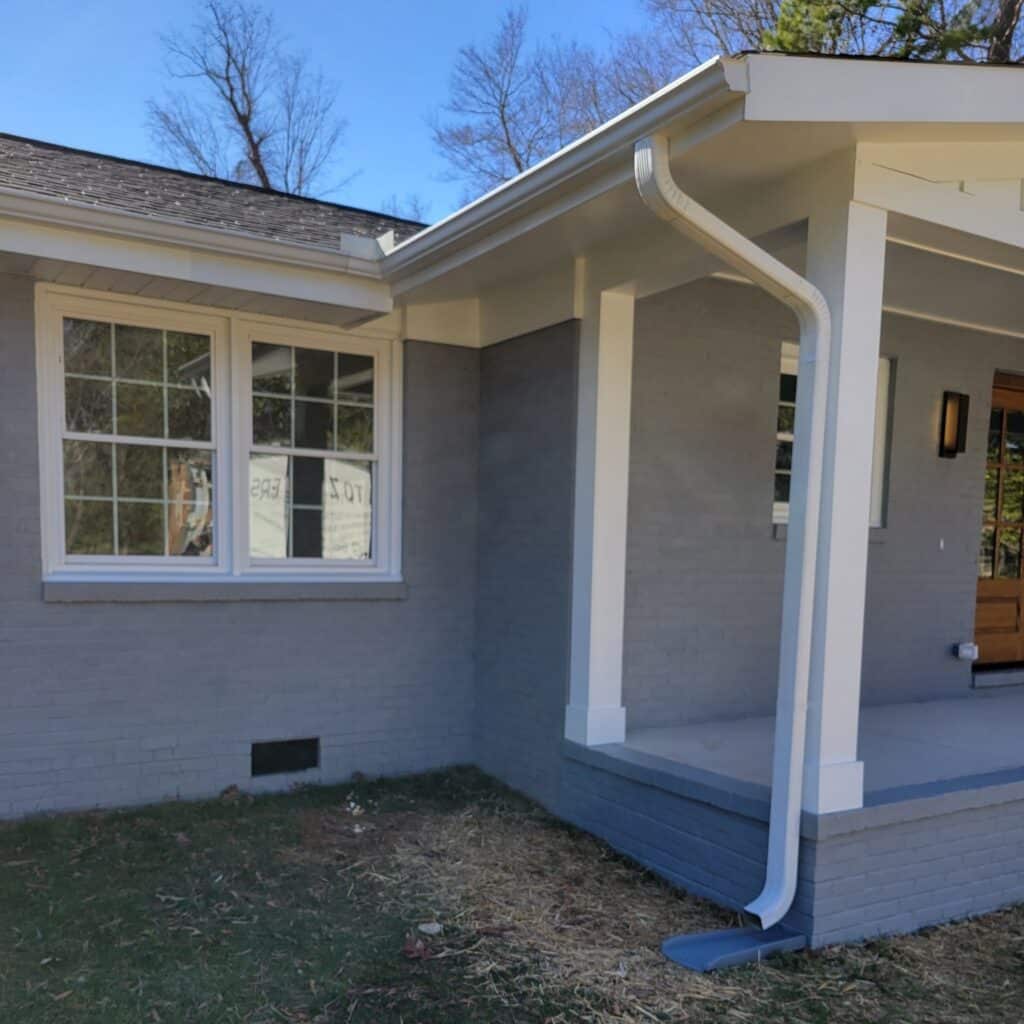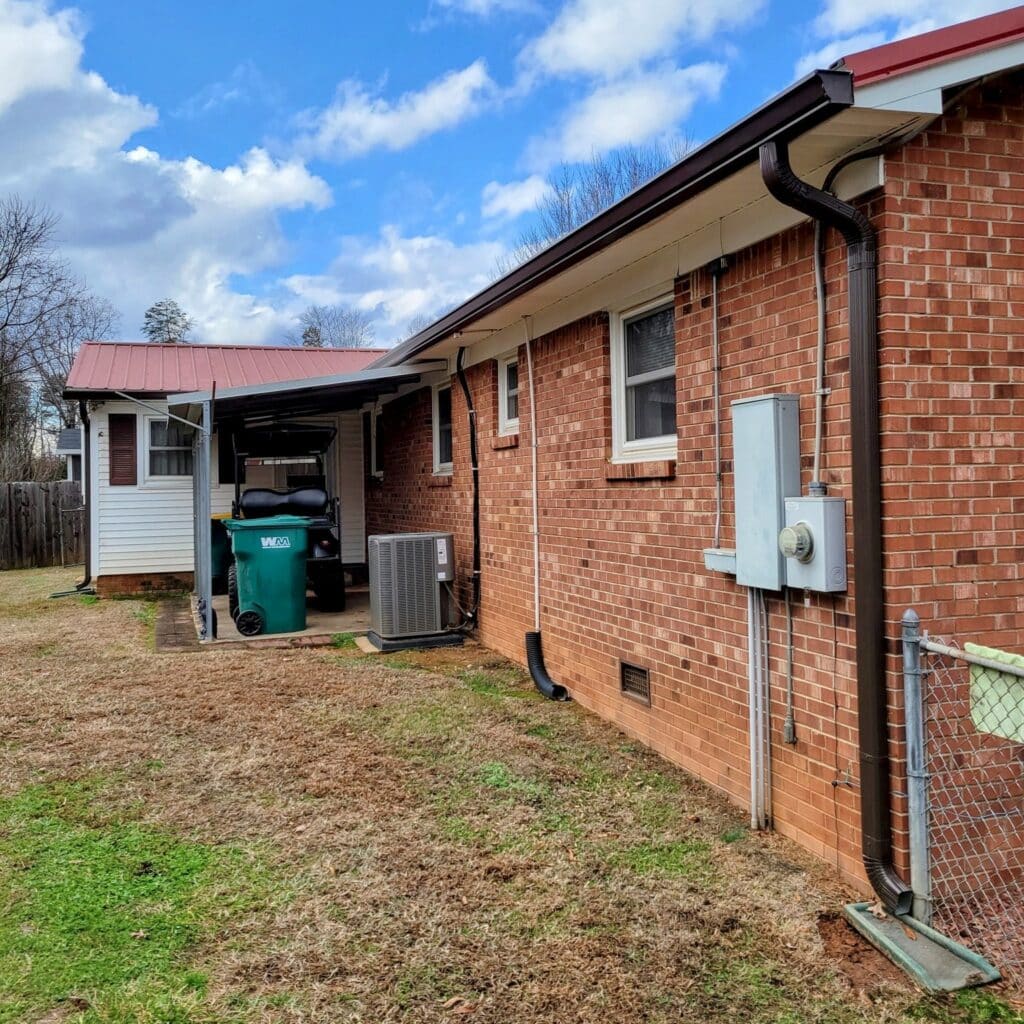Gutters 101: Downspout Drainage
Understanding the components of your gutter system is vital in preventing potential water damage to your home. One of the most overlooked details is the options you have for your downspout drainage. The downspout is the vertical pipe attached to the gutter that carries rainwater safely to the ground. In this blog, we will look over the methods by which we can disperse or collect this water in a way that protects our home.
Whether you choose an above-ground drainage solution or an underground drainage solution, we hope you take the time to thoroughly understand your options.
About Underground Drainage
An underground drainage system is a common and efficient option for managing rainfall coming from your gutter’s downspout. This type of drainage involves burying either a PVC pipe or a corrugated pipe underground where one end is connected directly to the downspout and the other releases the water at a long distance away from the home. This system moves the water from the gutter and through the underground drain, which may lead to the end of a lawn, a street, or even a sewer.
Pros
An underground drain aims to prevent the saturation of flowing water under and around the downspout resulting in damage and erosion to the home’s foundation. Therefore, if installed correctly, underground drainage systems are efficient in dispersing water far away from your home. This is also a great option if your lawn is susceptible to flooding or has a very minimal grade.
Cons
Although underground drainage systems can be a great option, there are a few disadvantages to consider. Since they are underground, a clog is more difficult to find and resolve when compared to one in the gutter or downspout. As a result, it can be left unnoticed until serious flooding or overflowing occurs. This leads to professional help being called to dig up your lawn, ripping apart your landscaping, and leaving an unappealing look to your home. It is best to create a full system from the very beginning with detailed plans on how and where the rainfall will be directed too. This system should include a complete maintenance plan to make sure the underground drainage remains functional for its full life.
PVC or Corrugated Pipe?
As mentioned earlier, if you are looking to install an underground drainage, you have the option of choosing a corrugated pipe or a PVC pipe.
A corrugated pipe is a pipe that has ridges and grooves made of iron, steel, or plastic. They are very flexible due to their corrugated nature, allowing them to fit in even the tightest of places. Corrugated pipes are easily replaceable and inexpensive. On the other hand, they are more prone to clogging because of the ridges and to breaking underground due to their thin nature. Corrugated pipes are usually the first choice for above-ground drainage since they can route in and around most landscaping.
A PVC pipe is a smooth pipe that lacks ridges and comes in different thicknesses. Due to their smoothness, water velocity is minimally impacted, helping prevent clogs. PVC pipes are durable, long-lasting, and are quite easy to maintain. However, some downsides to this option are that they are not flexible, so they require additional fittings to adjust to the area. Material costs for PVC are also much higher compared to corrugated pipe so a full underground PVC system can be rather expensive. The bad does become trivial as PVC pipes are completely worth the investment and we recommend nothing else but this system for a long-term solution.
About Above-Ground Drainage
The other option for drainage is an above-ground drainage system. These options are much simpler and more affordable when compared to underground systems. Some options include splash blocks, downspout extensions, or rain barrels.
A splash block is a common solution used by many homeowners. It is a rectangular block that directs water flowing from your downspout away from your home’s foundation. They are versatile as they can be basic or decorative. Splash blocks can only disperse water up to about 3ft – 5ft from the downspout.
A downspout extension is a very common, quick, and effective solution. It is a custom cut pipe running from the end of your downspout away from your home’s foundation. It can be made of corrugated pipe, PVC pipe or even aluminum. Extensions can disperse water up to about 15ft – 20ft from the downspout.
Lastly, homeowners can employ the use of a rain barrel. This is the most eco-friendly option as the rainwater can be reused for plants and gardens. It efficiently collects and stores all water from a downspout, usually about 100 gallons, before it can be used on the surrounding landscape. The downside is that rain barrels can fill up rather quickly during peak rain season. This can lead to unwanted water damage around the barrel.
These are all great options to consider if you are looking for short-term and long-term options for your downspout drainage.


Final Thoughts
We hope that this comprehensive guide on the available downspout drainage options has helped you learn about what type of drainage would work best for you. A to Z Gutters aims to guarantee customer satisfaction so contact us for any questions!
